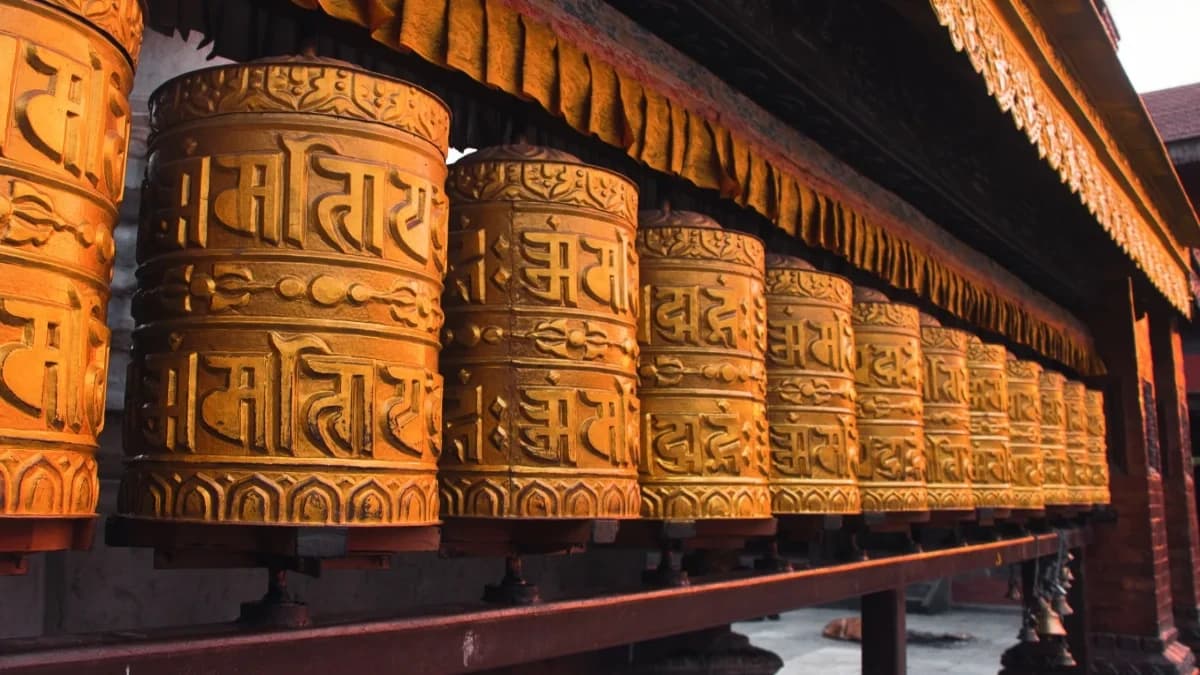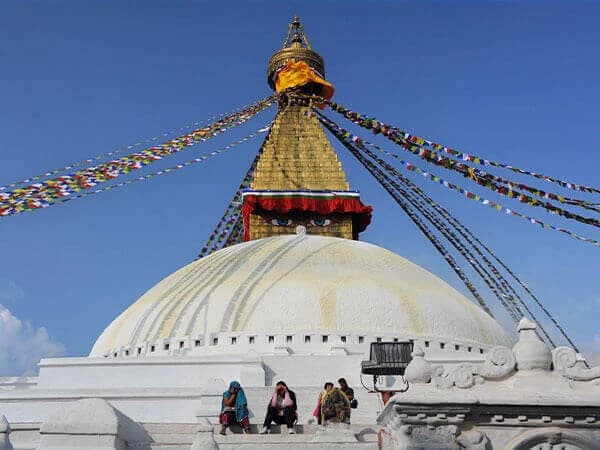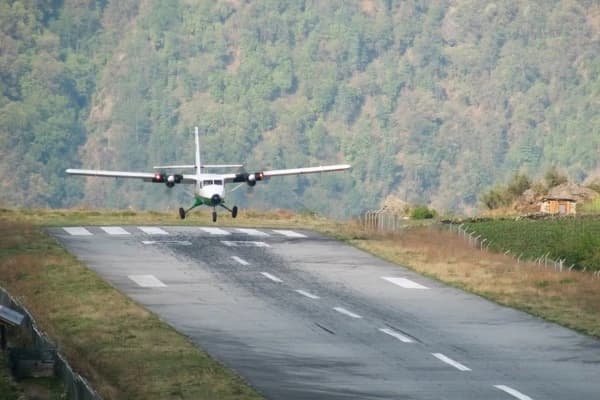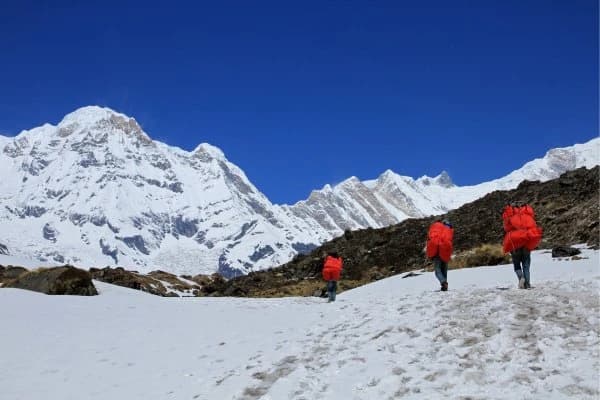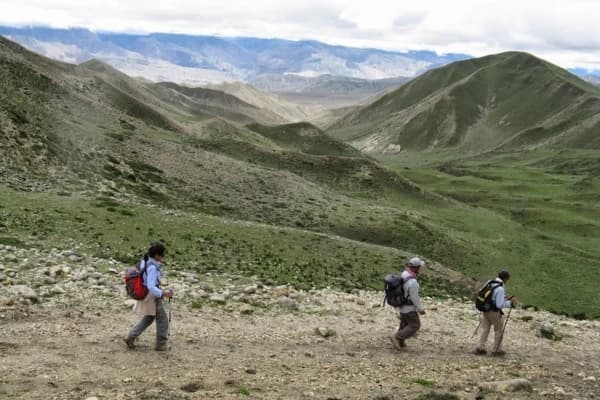The center of Nepal's art, religion, and history is Kathmandu valley. You'll witness a distinctive fusion of Buddhist and Hindu traditions living side by side in the Kathmandu Valley. The city serves as a cultural crossroads, with everything from prayer flags to sculpted pagodas, from busy bazaars to leisurely temple rites.
Kathmandu is a vibrant city filled with UNESCO heritage sites, bustling streets, and rich cultural experiences. First-time visitors can explore top attractions like Swayambhunath, Boudhanath, Pashupatinath, Durbar Square, and Thamel, with practical tips for transport, food, and sightseeing.
These Kathmandu tourist attractions are not just photo opportunities - they tell stories of kings, spiritual traditions, and daily lives over centuries. A good Kathmandu sightseeing guide helps you link the dots between what you see and what it means.
As you wander streets lined with small shrines, shop stalls, and festival decorations, you’ll find things to do in Kathmandu beyond the typical spots - like joining a local puja, watching artisans work clay, or sampling street snacks. Also, many Kathmandu cultural tours offer context you won’t get just from walking on your own.
Whether you're drawn to history, spirituality, or everyday life, Kathmandu offers all that and more. Below are the “must-visit” places that every first-timer should see.
In this guide, you’ll find both big names and hidden gems, with practical updates on entry fees, hours, and cultural tips.
Discover temples, squares, and hidden gems and best places to visit in Kathmandu! Book with Nepal Gateway Trekking today.
Top 5 Must-Visit Kathmandu Sightseeing Places
Here are the top 5 Kathmandu sightseeing places for first-time visitors, each described with history, practical advice, and tips to make your visit smoother.
1. Swayambhunath Stupa (Monkey Temple)
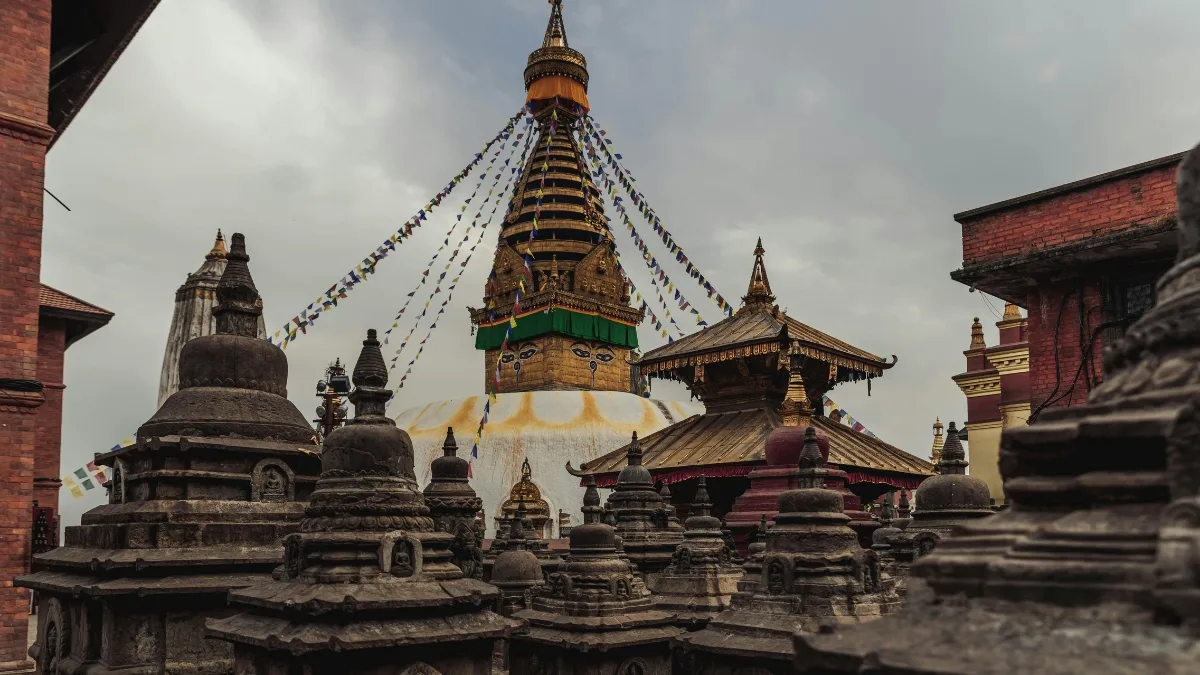
Perched on a conical hill about 3 km west of Thamel, Swayambhunath Stupa is among the oldest religious monuments in Nepal, dating back more than 1,500 years. According to legend, the entire valley was once a lake, and a lotus grew at its center; Swayambhu (“self-existent”) is said to have emerged when the water drained away.
The white dome represents the world, while the gilded spire’s thirteen tiers symbolize stages toward enlightenment. The all-seeing Buddha eyes on all four sides are some of Kathmandu’s most iconic images. Around the main stupa are smaller shrines, Harati Temple which is dedicated to the goddess of children, and several Tibetan monasteries.
- Entry fee: NPR 200 for foreign nationals, NPR 50 for SAARC visitors, free for children under 10
- Opening hours: Open daily; best visited at sunrise or sunset
Travel facts & tips:
- There are 365 steps leading up from the eastern side, representing each day of the year.
- The site blends Vajrayana Buddhism and Hinduism, with both faiths worshipping here peacefully.
- Bring a scarf or hat as the hilltop gets windy.
- Watch your belongings; the monkeys are mischievous.
Early morning, when monks chant and bells echo, is when Swayambhunath feels most alive. Every Kathmandu sightseeing guide includes it as a must-see for good reason: it offers a panoramic view that connects the spiritual and physical heart of the city.
If you are interested in exploring the cultural essence of Kathmandu, Nepal Gateway Trekking is here to provide a complete Kathmandu Valley Day Tour with comfort and affordable range.
2. Boudhanath Stupa
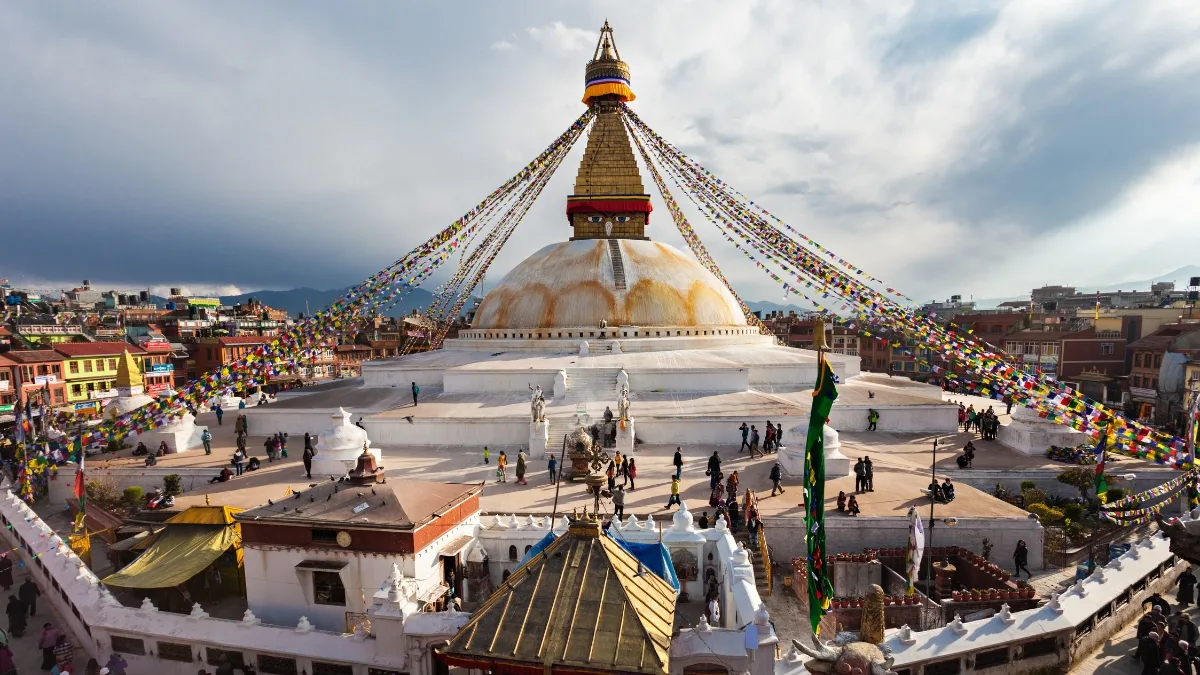
About 7 km east of central Kathmandu stands Boudhanath, one of the largest spherical stupas in the world and a UNESCO World Heritage Site since 1979. It was built in the 5th century CE after the death of Buddha and later became the main center for Tibetan Buddhism in Nepal.
The mandala-shaped design, roughly 36 m high, represents the path to enlightenment. Surrounding the stupa are 108 small prayer wheels and dozens of monasteries (gompas) belonging to different Tibetan sects. Thousands of pilgrims walk clockwise around it daily, spinning wheels and chanting Om Mani Padme Hum.
- Entry fee: NPR 400 for foreigners, NPR 100 for SAARC, free for children under 10
- Opening hours: 6 AM - 8 PM (monasteries may close earlier)
Did you know?
- The stupa was partially damaged in the 2015 earthquake but fully restored by 2016 through community funding.
- The famous Shechen Monastery nearby was founded by Dilgo Khyentse Rinpoche, teacher of the Dalai Lama.
- Boudha lights up beautifully at dusk when butter lamps glow and monks chant evening prayers.
Visitor tips:
- Mornings (6 - 8 AM) are peaceful; evenings are atmospheric.
- Rooftop cafés offer spectacular photo views.
- Combine your visit with Pashupatinath Temple, only 3 km away, on a single day.
This sacred site tops nearly every list of Kathmandu tourist attractions and is a highlight of most Kathmandu cultural tours for first-time visitors.
Nepal is rich in culture and religion, so if you are interest in Buddhist Culture Tour, you must visit Nepal.
3. Pashupatinath Temple
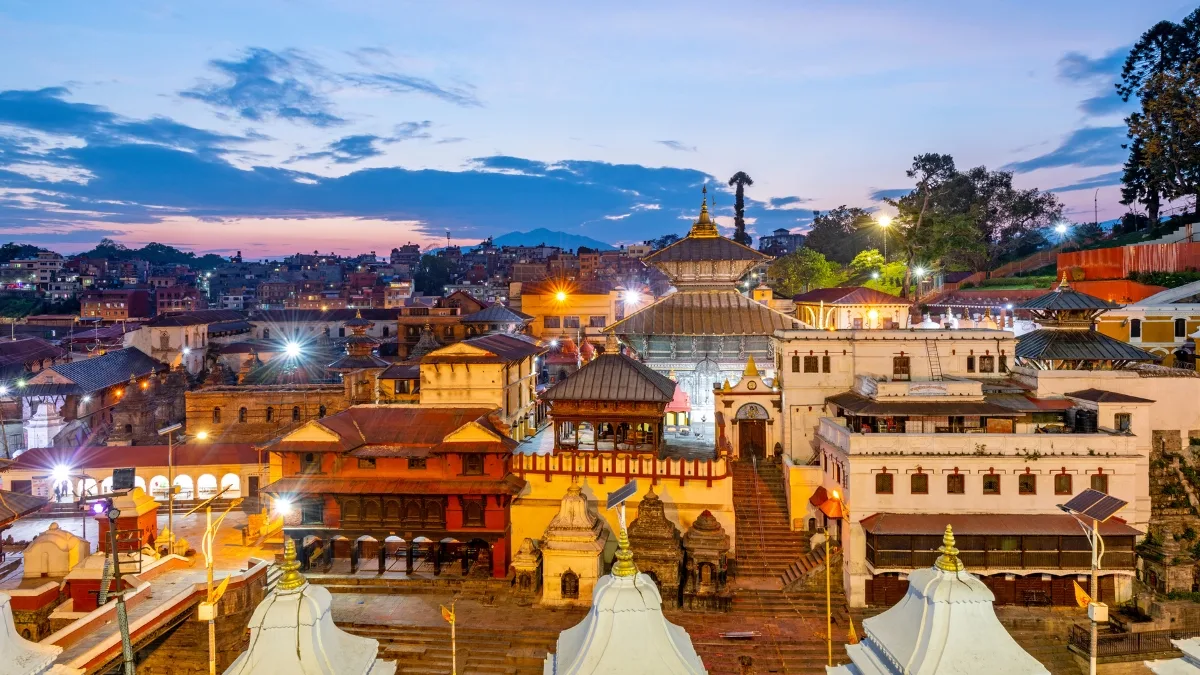
On the Bagmati River, Pashupatinath Temple is Nepal's most important Hindu shrine and one of South Asia's four main Shiva temples. The main pagoda-style temple, with its gilded roof and silver doors, was built in the 17th century, though the site itself dates back over a thousand years.
- Entry fee: NPR 1,000 for foreigners (free for Hindus)
- Opening hours: 4 AM - 9 PM; inner sanctum accessible 4 AM - noon and 5 PM - 7 PM
Hindu cremation rituals, which represent the cycle of life and death, are performed on the Bagmati ghats next to the temple. Non-Hindus are not permitted into the main sanctum, but they are welcome to view ceremonies from the terraces across the river.
Cultural insights:
- The temple is a major site during Maha Shivaratri, drawing over a million pilgrims annually.
- The two-tier roof is entirely plated in copper and gold.
- More than 500 smaller shrines and lingams fill the complex, showing centuries of devotion.
- Every evening at 6 PM, the Bagmati Aarti (fire ritual) illuminates the riverbank - a sight worth witnessing.
Visiting advice:
- Dress modestly, remove shoes before stepping onto temple platforms, and avoid photography during funerary rites.
- Include Pashupatinath in your list of things to do in Kathmandu for a deep understanding of Nepal’s living faith.
4. Kathmandu Durbar Square
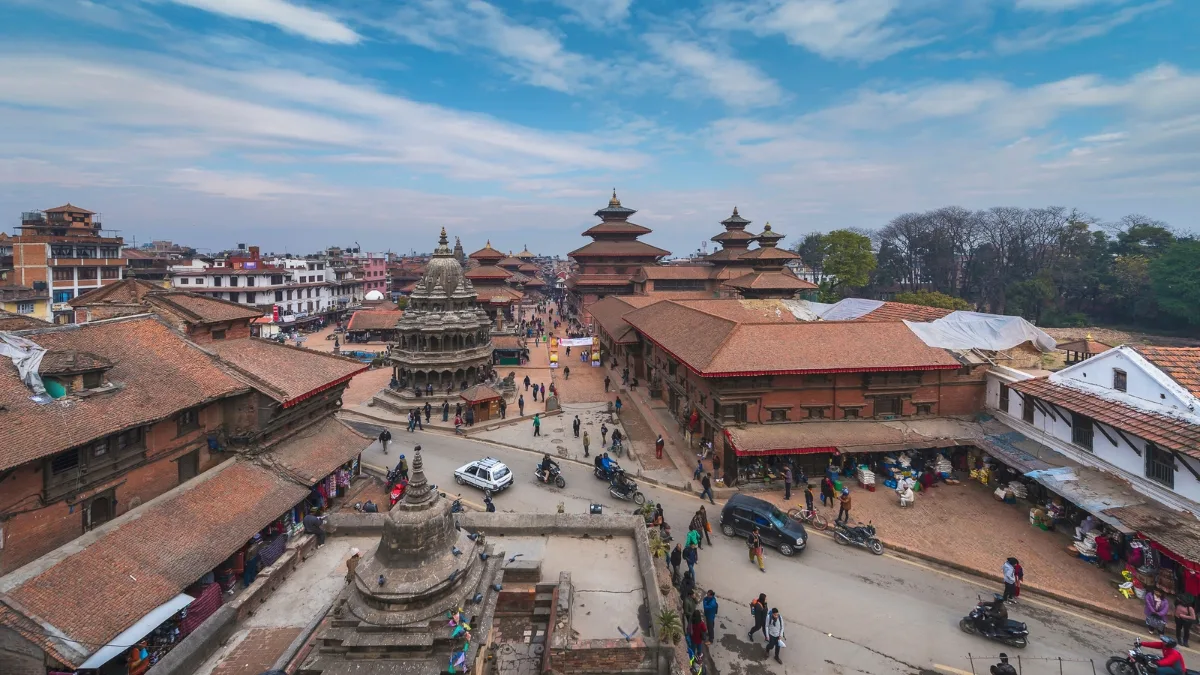
Situated in the old quarter of Basantapur, Kathmandu Durbar Square served as the royal palace complex of the Malla kings (12th-18th centuries) and later of the Shah dynasty. It remains a fascinating open-air museum of Newar architecture and royal history.
The 2015 earthquake damaged many buildings, but restoration is ongoing, led by UNESCO and local artisans using traditional techniques.
- Entry fee: NPR 1,000 (includes museum access), NPR 500 for SAARC
- Opening hours: Main monuments & museums 9 AM - 5 PM
Key structures include:
- Hanuman Dhoka Palace - residence of the Malla and Shah kings.
- Kumari Ghar - home of the Living Goddess Kumari, a young girl worshipped as the embodiment of Taleju.
- Taleju Temple - 35 m high, built in 1564 CE, one of the valley’s tallest pagodas.
- Kasthamandap - a three-roofed pavilion originally constructed from the wood of a single tree; believed to have given Kathmandu its name.
Traveller notes:
- Visit in the early morning to photograph before crowds arrive.
- Buy tickets at the main entrance booths; keep them for re-entry the same day.
- Don’t miss the daily appearance of the Kumari (Living Goddess) from her palace window, usually around 4 PM.
As one of 7 UNESCO World Heritage Sites in the Kathmandu Valley, Durbar Square captures the royal legacy that shaped Nepal. For travelers wondering where is Kathmandu, it’s the vibrant capital city of Nepal, surrounded by hills and steeped in rich cultural heritage. It’s a cornerstone of every Kathmandu sightseeing guide and Kathmandu cultural tour.
5. Thamel Area
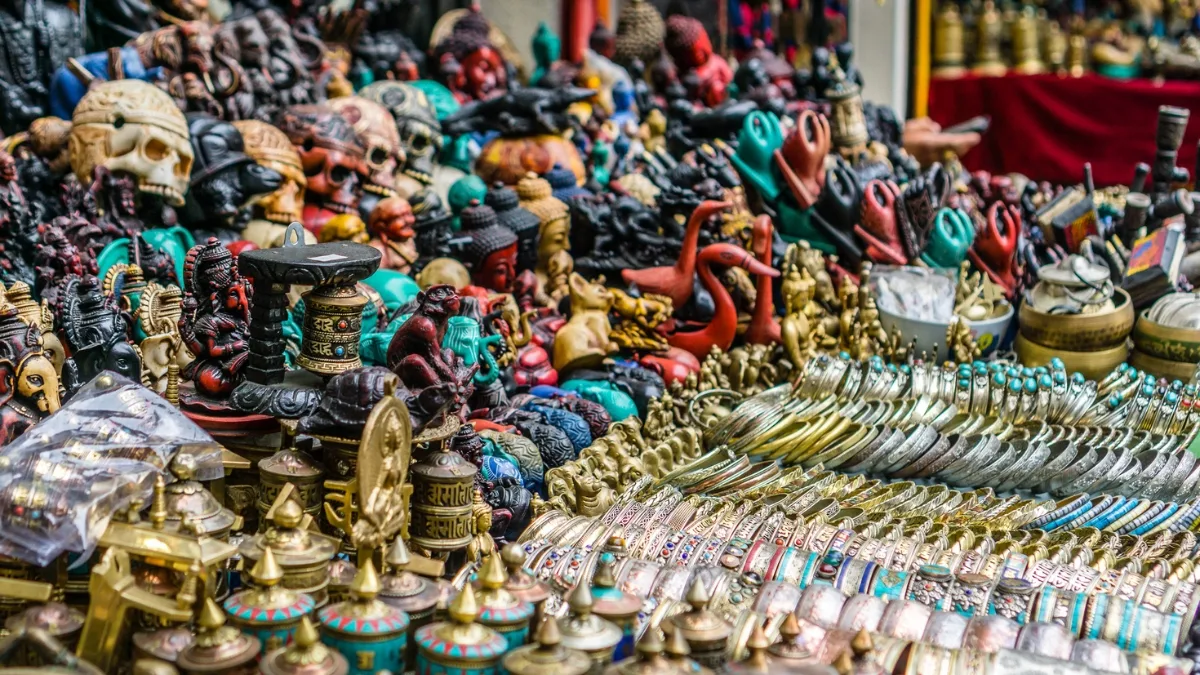
While temples tell Kathmandu’s story of faith, Thamel reflects its modern rhythm. Located just a 20-minute walk north of Kathmandu Durbar Square, it has been the traveller hub since the 1970s hippie era. Today it’s a maze of narrow lanes filled with cafés, trekking stores, art galleries, and nightlife.
Despite its tourist focus, Thamel still retains old Newar courtyards and small temples tucked between modern shops. During festivals like Indra Jatra, processions pass through these lanes, mixing ancient tradition with urban life.
What to expect:
- Hundreds of restaurants and coffee houses, from Nepali to international cuisines.
- Music bars and live-band cafés that play nightly.
- Trekking shops selling gear for Everest and Annapurna expeditions.
- Local markets offering pashmina scarves, Thangka paintings, singing bowls, and silver jewellery.
Safety & logistics:
- Streets are mostly pedestrian; small vehicles enter at a slow speed.
- ATM access and currency exchange are plentiful.
- Carry small notes; bargaining is common in souvenir shops.
Explore Kathmandu’s top sights – start your first adventure today! But if you are into hiking or trekking, here are the top five day hikes around Kathmandu Valley you shouldn’t miss.
Best Time to Visit & Trip Planning Tips
When to come, what to expect, and how to plan well make all the difference. These details will help you pick the right season and avoid hassle in your Kathmandu Sightseeing Places for First-Time Visitors experience.
Seasons & Weather
- Autumn (late September through November): Clear skies, mild temperatures (around 10-25°C), excellent Himalayan views. This is peak season.
- Spring (March through May): Warm days (12-28°C), flowers like rhododendrons blooming in the valleys, still good weather for trekking or sightseeing.
- Winter (December through February): Cold mornings (can go below 5°C), but generally dry and crisp. The views are good. Nights are cold, daytime sunny.
- Monsoon (June through August): Heavy rains, cloud cover, and sometimes road landslides. Some trails or side trips might be closed or muddy.
Festival highlights:
- Dashain & Tihar: Major national Hindu festivals, very lively.
- Indra Jatra: Held around September (dates vary) in Kathmandu, with masked dances and chariot processions in Durbar Square,
- Gai Jatra, Teej: Local Newari and Nepal-wide celebrations.
Transport tips:
- Use registered taxis (with meters) or ride apps (Pathao, InDrive) for safety and clarity.
- E-rickshaws are common for short inner-city trips.
- Walking is often faster than driving in congested zones.
- For day trips outside, hire a car or shared jeep.
Accommodation suggestions:
- Stay in Thamel or near Durbar Square for easy access to most sites.
- You’ll find guesthouses to mid-range hotels; book during festival times.
- Ask about rooms with views (rooftop, garden) for better lighting and atmosphere.
Estimated costs:
- Entry fees (5 major sites): ~NPR 1,000-2,200 total (depending on country/group discounts)
- Meals per day: NPR 400-1,200 (depends on local vs sit-down restaurant)
- Local transport (within city): NPR 300-800 per day
Plan your guided tour and experience the city like a local with Nepal Gateway Trekking - Your trusted trekking agency of Nepal!
Optional Day Trips & Nearby Attractions
If you have extra days, these nearby spots enrich your trip beyond the main city:
|
Place |
Approx. Distance |
Best Season |
Highlights |
|
Patan Durbar Square |
5 Km |
Year-round |
Newar architecture, Patan Museum, and Golden Temple |
|
Bhaktapur Durbar Square |
13 Km |
Spring / Autumn |
Pottery Square and Nyatapola Temple |
|
Nagarkot |
28 Km |
October - April |
Sunrise and panoramic Himalayan views |
|
Shivapuri National Park |
12 Km |
October - May |
Monastery hikes, bird watching, and forest trails |
Kathmandu Cultural Experiences Beyond the Top 5
The spirit of Kathmandu lives in street life, festivals, crafts, and food. Here are rich cultural experiences you should not skip.
- Join a local festival: Dashain, Tihar, and Indra Jatra bring whole neighbourhoods alive.
- Food walks: Try momo, chatamari, sel roti, wada, and local sweets at busy stalls.
- Handicraft workshops: Watch or even try Thangka painting, pottery in Bhaktapur, and wood carving in Patan.
- Traditional music/dance shows: Small venues often host Newari folk performances.
- Museums & art galleries: Patan Museum, Nepal National Museum, and local private galleries.
Make your first visit memorable and soak in Nepal’s culture!
Practical Tips for First-Time Visitors
- Keep your valuables safe by using zipped bags or a money belt.
- Confirm taxi fares beforehand if meters are not in use.
- Begin sightseeing early to avoid crowds and capture better photos.
- Rely on ride-sharing apps or local taxis for convenient transportation.
- Respect photography rules at temples and other sacred sites.
- Opt for guided tours for added safety and insights.
- Allow flexible schedules to accommodate traffic and local timing.
First-Time Visitor Tips Kathmandu Checklist:
- Carry a photocopy of your passport and visa; leave originals in a safe place.
- Small cash in local currency (NPR) for entrances, small purchases - not all stalls accept cards.
- Bring a power bank, as you may not get a chance or time to recharge your devices.
- Use bottled water or filtered water, and be cautious with ice unless it's from trusted vendors.
- The dress code is very important, especially at Pashupatinath and Durbar Square temples. Make sure to cover your shoulders and knees, and avoid sleeveless or shorts.
Final Note for First-Time Visitors
The Kathmandu Sightseeing Places for First-Time Visitors are your door into Nepal’s layered history and warm people. These top 5 sites give you the landmarks, but what will stay with you are the scents, stories, tastes, and smiles you pick up between temples.
Plan your days around the season, keep your pace gentle so you can soak in the smaller moments like sunrise at Nagarkot, prayer at dawn in Boudhanath, a random street festival in Basantapur.
Start planning your Kathmandu sightseeing trip today! Contact us.
FAQs - Kathmandu Sightseeing for First-Time Visitors
What is the best time to visit Kathmandu?
Autumn (late September - November) and spring (March-May) are the best for weather, clear skies, and festival experiences.
How many days are enough for first-time visitors?
Two to three full days help you cover the top 5 main attractions plus one optional day trip, without rushing.
Are the temples safe for tourists?
Yes, they are safe overall. Respect local customs, follow rules, stay aware of your surroundings, and avoid restricted or sensitive areas.
Can I hire a local guide?
Yes. English-speaking, licensed guides are available for major heritage sites and cultural tours. They cost around NPR 1,500-2,500 per day depending on itinerary.
Is Thamel family-friendly?
Yes. Thamel has hotels for all budgets, family-style restaurants, and shops. However, evenings can be lively and chaotic, so stick to well-lit streets.
How much is the entry fee for Durbar Square?
For foreign nationals, the fee is about NPR 1,000, including access to the museum. For SAARC nationals and Nepali citizens, there are lower rates or free access.
What is the dress code for Pashupatinath?
Make sure your clothes cover your shoulders and knees. Avoid sleeveless tops, shorts, or revealing clothes.
Are there guided cultural tours?
Yes, many local companies offer them, including specialized ones focused on art, heritage, food, or festivals. A good option if you want deeper context in your Kathmandu sightseeing guide.
How to get from Swayambhunath to Boudhanath?
By taxi or ride-sharing app; it typically takes about 20-30 minutes, depending on traffic. During the drive, you may also catch views of the city.
What festivals can I witness in Kathmandu as a first-time visitor?
Indra Jatra (around early September) is perhaps the most dramatic for a traveller. Dashain, Tihar, Teej, and Gai Jatra are other major occasions. Each brings the city alive in different ways.
